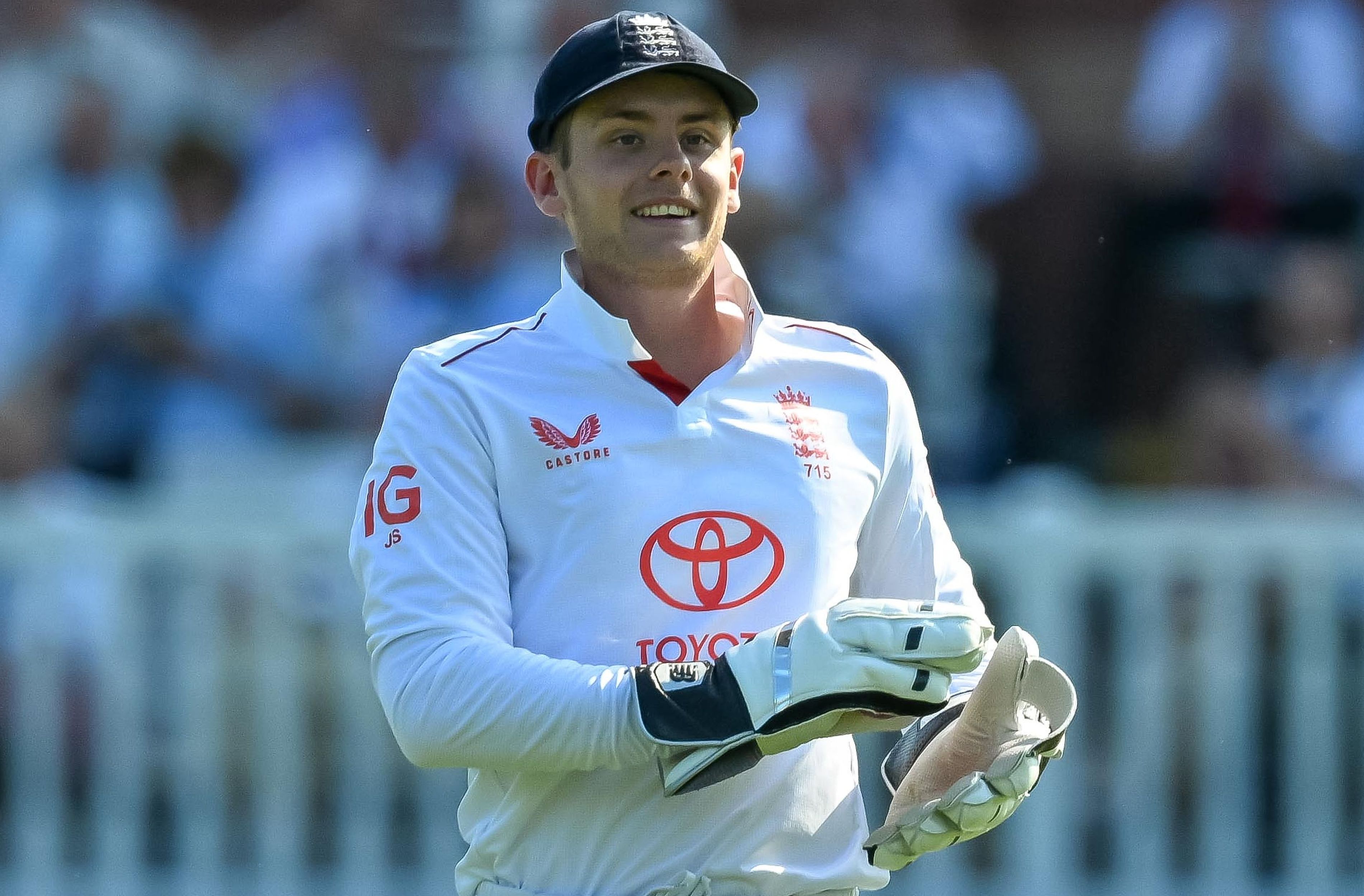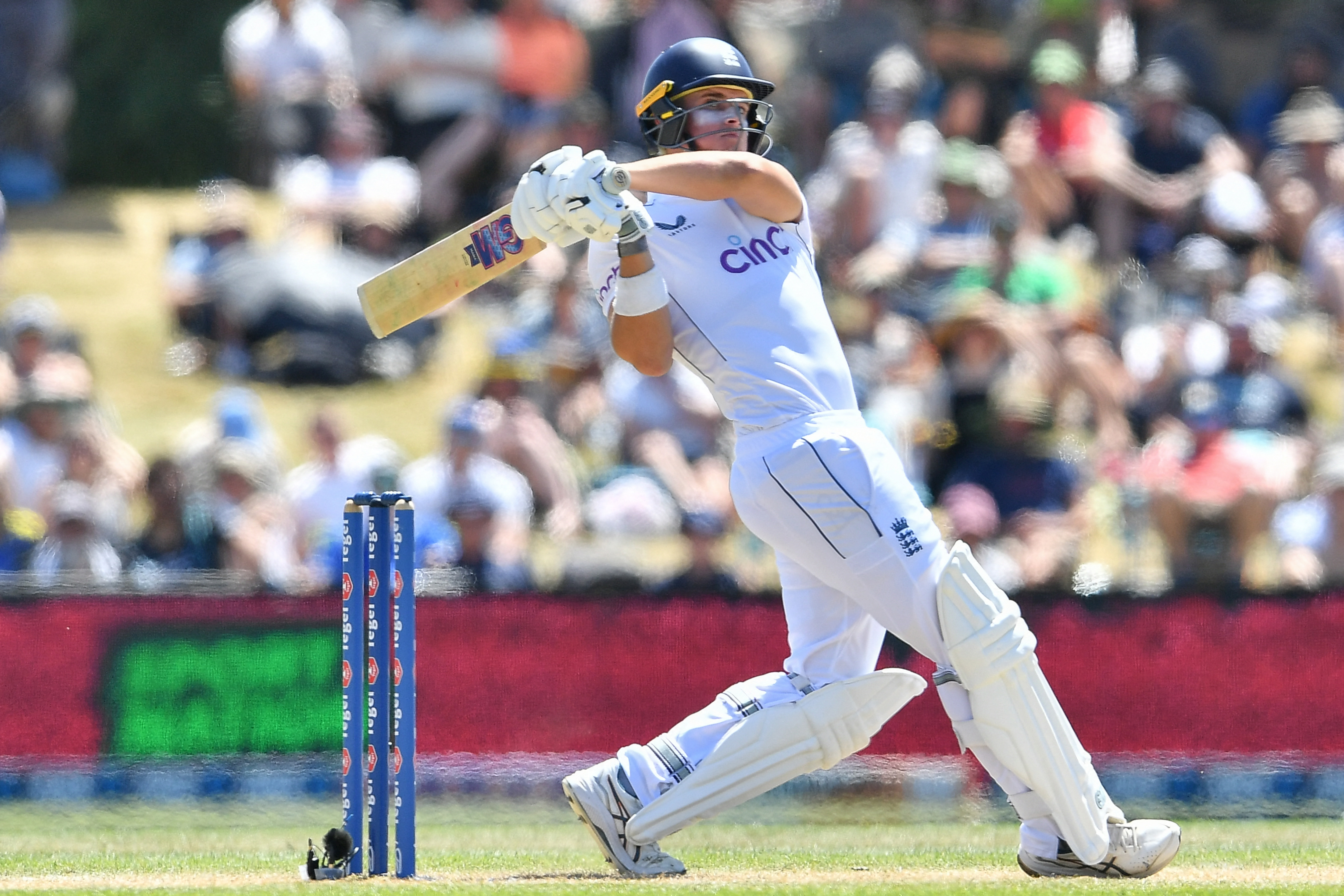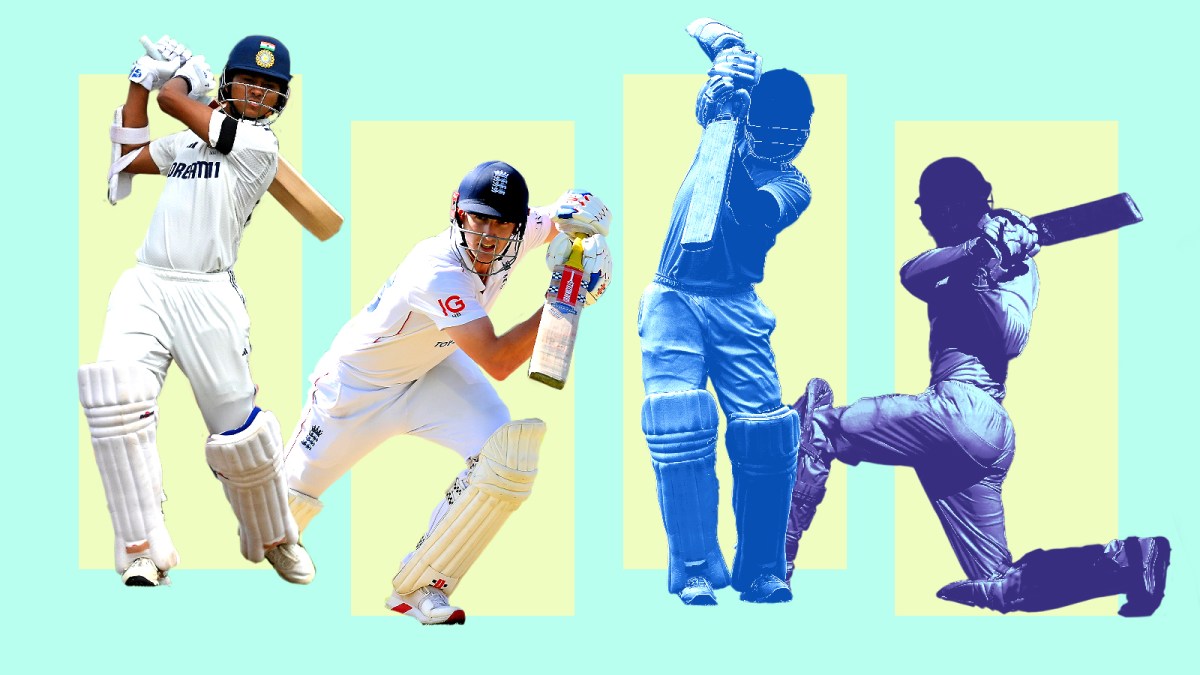The previous occasion England and India faced each other in a Test at Old Trafford? That was in 2014, when England won comfortably by an innings and 54 runs, with Stuart Broad named man of the match for his first-innings six for 25 as India were bundled out for 152 and 161. But it may be better remembered for Broad taking a horrible blow in the face, breaking his nose, when batting against Varun Aaron, because that was the day that Broad’s future as an all-rounder ended. He admitted that he suffered nightmares thereafter and was never the same as a batsman again.
With the off spinner Moeen Ali taking four second-innings wickets, this was an Old Trafford pitch of yore, with both pace and bounce and encouragement for the spinners.
There were signs of that again last year when Mark Wood was bowling some rockets in victory over Sri Lanka, but there are many who fear the pitch in Manchester has become too tired, as evidenced by all four County Championship matches there this season being drawn.
It has been a very dry summer, in fairness, with the surfaces for the three Tests so far in this series in a way resembling subcontinental pitches in their slowness, minus the extravagant turn that has meant England have won only two of their past 15 Tests in India.
The lack of traditional swing and seam here — as well as the absence of two greats in Broad and James Anderson — has definitely been to the Indian batsmen’s liking, with eight centuries already between them, whereas only two were scored in that five-Test series in 2014, which England won 3-1.
Virat Kohli averaged only 13.40 in that series, dismissed four times by Anderson, including in both innings at Old Trafford for 0 and 7. Yet it was at the end of that series that the late Martin Crowe wrote his famously prescient piece for ESPNcricinfo about the “fab four” of Joe Root, Kohli, Kane Williamson and Steve Smith, saying they “have shown themselves to be the leading young bucks in Test cricket today. No one from the other countries quite matches these players so far. All four are seriously earmarked as future captains of their countries”.

Root made headlines when England hosted India in 2014 and is still at the top of his game, aged 34, as the world’s No1 batsman
MARTIN RICKETT/PA
They were all aged between 23 and 25, and had played between 20 and 34 Tests. Kohli was 25 and averaging a tick under 40 in Test cricket, with six centuries. Crowe acknowledged that “he has hit absolute rock bottom, with a need to assess and start again”, adding: “Despite a solid technique with no obvious weakness — which produced centuries in Australia, South Africa and New Zealand — he has found the late-swinging ball in England to be his nemesis. In short, his footwork needs to be more decisive in getting close to the ball, shutting down late movement.”
That was exactly what Kohli did when returning to England in 2018, standing outside his crease and blunting Anderson to the extent that he made two centuries in that series at 59.30.
“My sense is that they will all take turns as the No1 Test batsman,” said Crowe of the fab four — and they certainly have, with Kohli having been there for 469 days, Williamson for 639, Smith a whopping 1,506 and Root 694, up to and including the start of this Test. He is No1 now, with Williamson in second and Smith in fourth.
At 36, Kohli has retired from Test cricket, having finished with an average of 46.85 and 30 centuries. Williamson, whom I had the pleasure of watching live in a Vitality Blast game in Cardiff last Friday evening (he hit two sixes into the River Taff with ridiculous ease and the most sweet sound emanating from his bat), has moved his average from 40.06 up to 54.88, while Smith has gone from 40.02 to 56.02. Root has the most centuries of the four with 37, averaging 50.80, compared to 50.94 aged 23 when Crowe opined, but the point is that Crowe certainly knew his onions. He recognised greatness in the making.
That era will end soon enough, though. Smith is 36, and both Williamson and Root are 34. And who of the young guns will replace them? Williamson has already had his say. “The players that come to mind in terms of multi-format are Yashasvi Jaiswal, Shubman Gill, Rachin Ravindra and Harry Brook,” he told ESPNcricinfo. “And also, Cameron Green. Those are all outstanding players and have shown fantastic moments in all formats. All young, and their games are just growing.”
Let’s just concentrate on Test cricket, however, and we can immediately discard Green. He is a fine all-rounder but a No6, not a No3, into which Australia have been attempting to make him. Indeed, as harsh as it may seem, we can discard any Australians, can’t we? Travis Head is 31, so not one for the future. There may be an Australian hiding out there — sadly Sam Konstas has been exposed — but I’m not quite sure about the Kiwi Ravindra (averaging 37.75 with just two hundreds in 15 Tests) as one-day international cricket appears to be his forte. For now, the search for that new quartet should focus mainly on this England versus India series.

Green’s attempts to move up the Aussie order have fallen flat
AFP
Gill is 25, already captain, and now averages 41.66, having endured some tough times, and as Crowe said of his four: “The common denominator is that each had a period of extreme failure.”
Jaiswal knows all about adversity, having lived in a tent in Mumbai in order to pursue his cricketing dreams, but, after a fine start to this series, looked a little spooked by his Indian Premier League colleague, Jofra Archer, at Lord’s.
He is only 23, though, having played 22 Tests, and he averages 50.77. He looks the real deal, as, of course, does Brook, who is a little older at 26, but averages 57.67, with nine centuries. He has already occupied that world No1 spot (for 16 days) and has captained England in the white-ball stuff. He will eventually need to move up to bat at No4 to satisfy himself and others, but that numbers debate brings us to Jamie Smith. Could he possibly move into this group if he sheds the gloves and goes up the order (but not yet)? It is hardly a ludicrous shout, because there is little doubt to me that he and Brook will become England’s best two batsmen.
What about Jacob Bethell as a long shot? The 21-year-old does not have a first-class century yet, let alone a Test one, and he is still waiting for the selectors to lose faith with one of Zak Crawley or Ollie Pope, but he has shown some promising signs for sure.

Smith averages 55.57 from 13 Tests, all as wicketkeeper, and would need to relinquish the gloves to move up the order
GRAHAM HUNT/PROSPORTS/SHUTTERSTOCK

Bethell looked comfortable in New Zealand and passed fifty in three of his six innings, but is one for the future
SANKA VIDANAGAMA/AFP VIA GETTY IMAGES
Others like Pakistan’s Babar Azam and Australia’s Marnus Labuschagne (370 days at No1) once made strong cases later for admission to Crowe’s club, and for now Sri Lanka’s Kamindu Mendis is worth a mention. He is 26 and averages 62.66 in his 14 Tests, but he has actually slumped, possibly having been worked out a little, having averaged 91 in his first eight Tests, but just 31 in his past six. His compatriot, Pathum Nissanka, is 27 and averages 45 from his 18 Tests and he has gone the other way — averaging 57 in his past eight Tests after just 35 in his first ten. Pakistan’s Abdullah Shafique is 25 and averages 38.56, but after that the cupboard is fairly bare.
Indeed it may be that we never see the like of the fab four again, simply because the suffocating tentacles of franchise T20 cricket do not allow it. We should enjoy them while we can.
England v India
Fourth Test match, Old Trafford
Start Wednesday, July 23, 11am
TV Sky Sports Cricket

